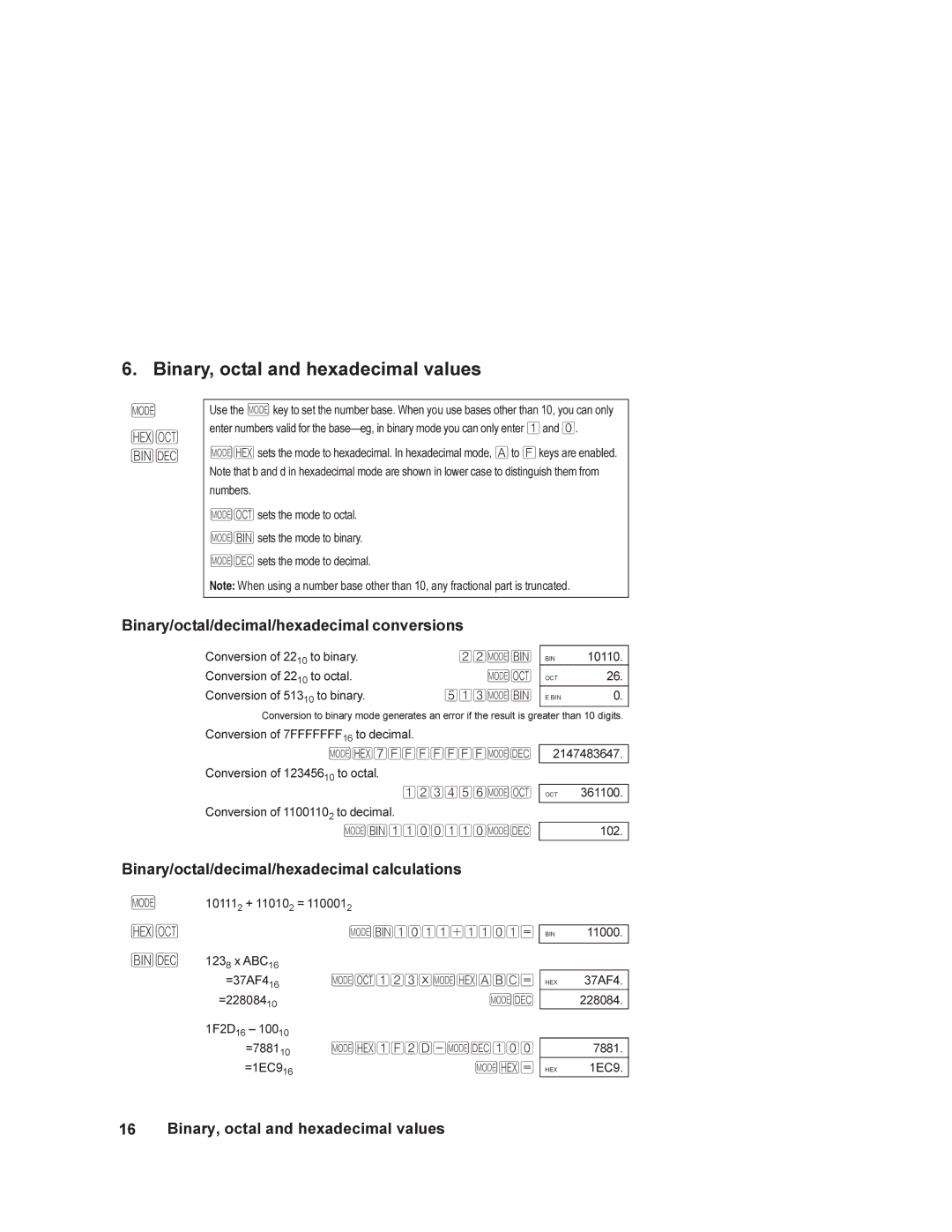
6. Binary, octal and hexadecimal values
M
¦§ ¥¤
Use the M key to set the number base. When you use bases other than 10, you can only enter numbers valid for the
M¦ sets the mode to hexadecimal. In hexadecimal mode, A to F keys are enabled. Note that b and d in hexadecimal mode are shown in lower case to distinguish them from numbers.
M§ sets the mode to octal.
M¥ sets the mode to binary.
M¤ sets the mode to decimal.
Note: When using a number base other than 10, any fractional part is truncated.
Binary/octal/decimal/hexadecimal conversions
Conversion of 2210 to binary. | 22M¥ |
Conversion of 2210 to octal. | M§ |
Conversion of 51310 to binary. | 513M¥ |
BIN | 10110. |
OCT | 26. |
|
|
E BIN | 0. |
|
|
Conversion to binary mode generates an error if the result is greater than 10 digits.
Conversion of 7FFFFFFF16 to decimal. M¦7FFFFFFFM¤
Conversion of 12345610 to octal.
123456M§
Conversion of 11001102 to decimal. M¥1100110M¤
2147483647.
OCT 361100.
102.
Binary/octal/decimal/hexadecimal calculations
M101112 + 110102 = 1100012
¦§ | M¥1011+1101= |
¥¤ 1238 x ABC16 |
|
=37AF416 | M§123*M¦ABC= |
=22808410 | M¤ |
1F2D16 – 10010 |
|
=788110 | |
=1EC916 | M¦= |
BIN 11000.
HEX 37AF4.
228084.
7881.
HEX 1EC9.
